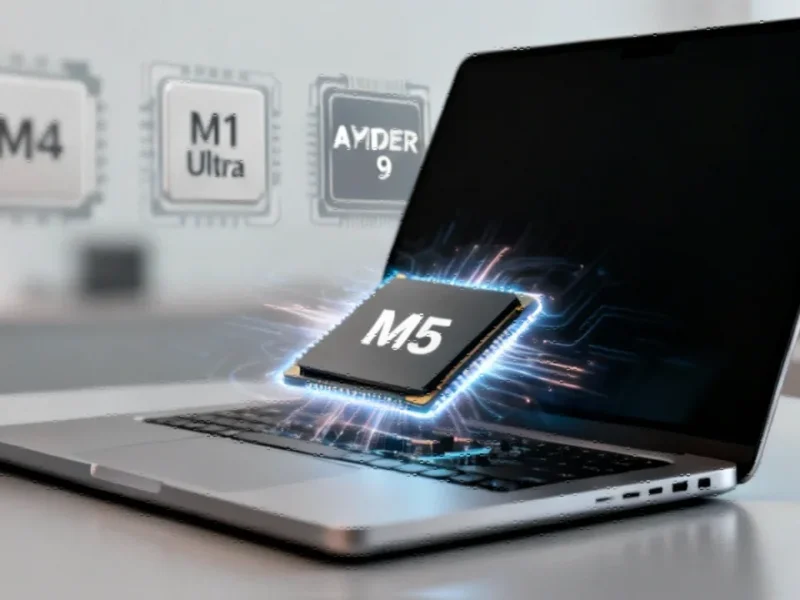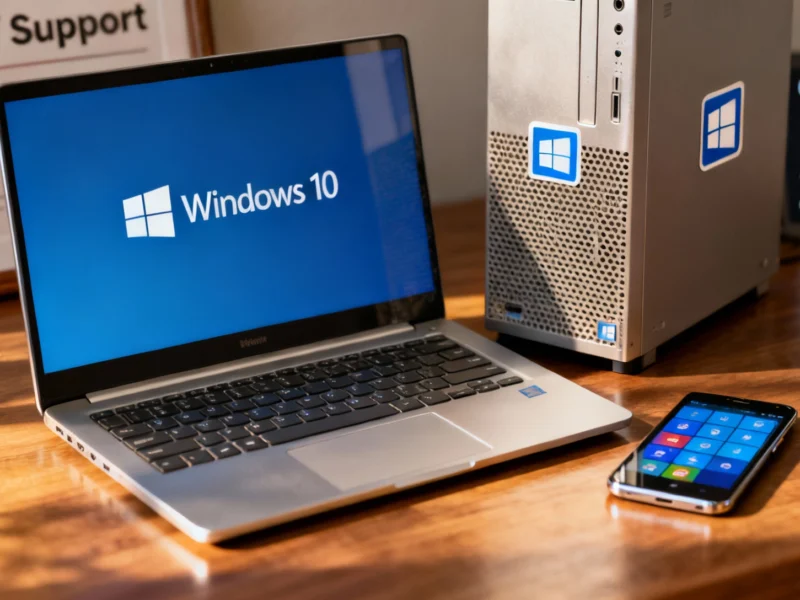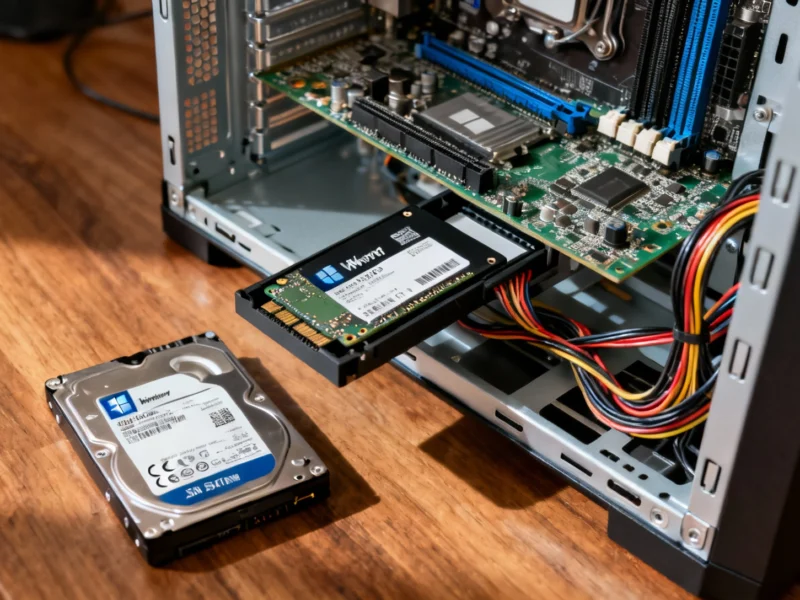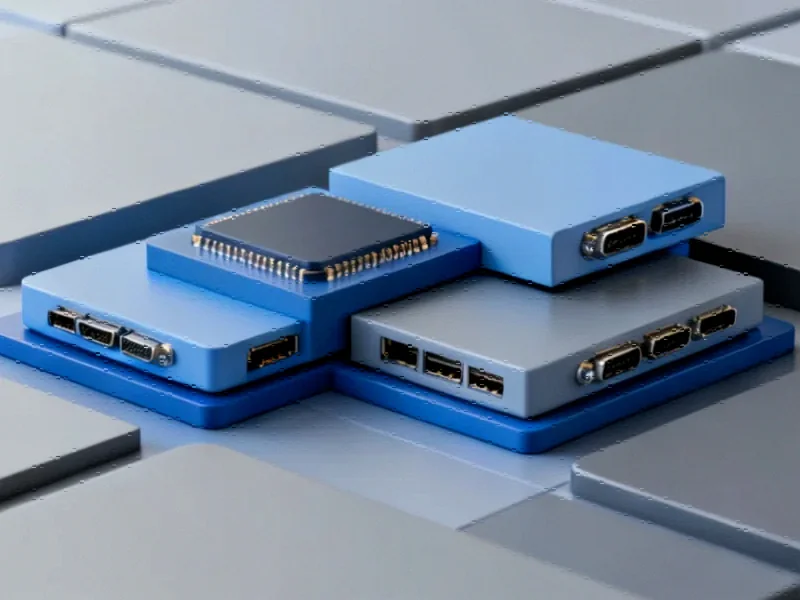Note: Featured image is for illustrative purposes only and does not represent any specific product, service, or entity mentioned in this article.
Apple’s M5 Chip: A New Benchmark in Single-Core Performance
In a stunning development that has the technology world buzzing, Apple’s newly announced M5 chip has demonstrated what appears to be the highest single-core performance ever recorded in the Geekbench 6 database. The leaked benchmark results, submitted on October 17, reveal a single-core score of 4,263—significantly outpacing not only Apple’s previous M4 chip but potentially every consumer processor available today.
The implications of this performance leap extend far beyond simple bragging rights. As single-core performance remains crucial for system responsiveness and many gaming and application experiences, the M5’s achievement signals a substantial advancement in how users will interact with their devices. The chip’s multi-core performance of 17,862 points also represents approximately 20% improvement over the M4, demonstrating balanced advancement across both single and multi-threaded workloads.
Performance Analysis: Putting the Numbers in Context
When comparing the M5 to its predecessors and competitors, the performance gap becomes strikingly clear. The chip outperforms the M4 Max’s score of 3,914 and dominates AMD’s Ryzen 9 at 3,399. Perhaps most impressively, the base M5 chip appears to match the performance of the M1 Ultra—previously found only in high-end Mac Studio systems—in a standard MacBook Pro configuration.
This represents a remarkable acceleration in Apple’s silicon development timeline. The achievement becomes even more significant when considering that industry developments in chip manufacturing have typically shown incremental improvements rather than dramatic leaps. The M5’s architecture, featuring a 10-core CPU with four performance cores and six efficiency cores, demonstrates Apple’s continued refinement of their performance core design while maintaining energy efficiency.
Technical Architecture and Real-World Implications
The 14-inch MacBook Pro featuring the M5 chip represents a new pinnacle in laptop performance. The single-core benchmark specifically measures the capability of individual performance cores, which directly impacts:
- Application responsiveness and launch times
- Gaming performance and frame rates
- Web browsing smoothness
- Overall system snappiness during daily use
Meanwhile, the multi-core performance showcases how the chip handles demanding professional workloads, including video editing, software development, and scientific computing. This balanced approach to performance improvement reflects Apple’s understanding of diverse user needs across different computing scenarios.
Market Context and Future Expectations
Apple’s timing with the M5 release comes amid significant global economic shifts that have affected technology supply chains and consumer purchasing patterns. The company’s ability to deliver such a substantial performance improvement despite these challenges speaks to their engineering resilience and long-term strategic planning.
The technology sector continues to evolve rapidly, with strategic shifts reshaping manufacturing approaches across the industry. Apple’s vertical integration and control over both hardware and software has clearly provided them advantages in optimizing performance that competitors struggle to match.
Looking forward, the anticipated Pro and Max versions of the M5, expected in early 2026, promise even greater performance ceilings. If the base M5 already challenges previous-generation flagship chips, the professional variants could redefine expectations for mobile computing performance entirely.
Broader Industry Impact
The M5’s performance achievements arrive during a period of intense competition across multiple technology sectors. From entertainment platforms redefining sports coverage to software updates enhancing graphics capabilities, the pace of innovation continues to accelerate. The computing performance demonstrated by Apple’s latest chip will likely influence graphics compatibility standards and development priorities across the industry.
For professionals and consumers alike, the M5 represents more than just another processor iteration—it signals a shift in what’s possible with mobile computing. As detailed analysis confirms, this performance breakthrough comes at a crucial moment when computing demands continue to grow across both consumer and professional applications.
Availability and Next Steps
The 14-inch MacBook Pro with M5 chip is currently available for pre-order, with official launch scheduled for October 22. For users considering an upgrade, the performance improvements—particularly in single-core tasks—appear substantial enough to justify the investment, especially for those working with applications that benefit from strong per-core performance.
As the technology industry continues to monitor these market trends and their implications, the M5 stands as a testament to Apple’s continued leadership in silicon design. The company’s ability to consistently deliver meaningful performance improvements while maintaining power efficiency remains unmatched in the industry, setting a high bar for competitors and benefiting consumers through genuine technological advancement.
This article aggregates information from publicly available sources. All trademarks and copyrights belong to their respective owners.



